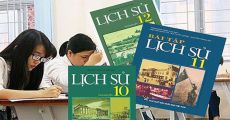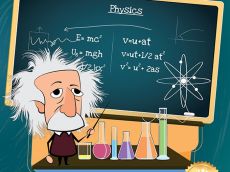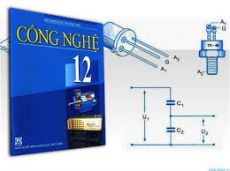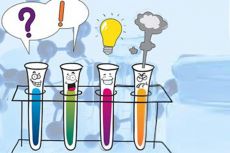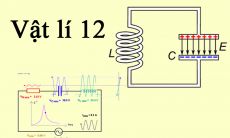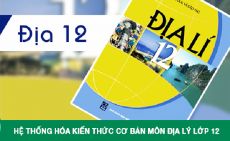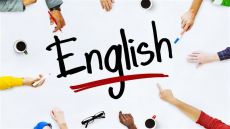Đề thi thử tốt nghiệp THPT QG môn Tiếng Anh năm 2020
Đề tuyển chọn số 15
-
Mark the letter A, B, C, or D on your answer sheet to indicate the word(s) CLOSEST in meaning to the underlined word(s) in each of the following questions from 1 to 2
Câu 1:
A. felt sorry for us
B. changed his decision
C. refused to change his decision
D. wanted to continue
-
Câu 2:
English, Maths and Literature are core subjects, which are compulsory in the national examination. (underlined words CLOSET in meaning with)
A. minor
B. main
C. nonessential
D. unimportant
-
Mark the letter A, B, C, or D on your answer sheet to indicate the underlined part that needs correction in each of the following questions from 3 to 5.
Câu 3:
A. My
B. go usually
C. when
D. free time
-
Câu 4:
Dreams commonly made up of either visual or verbal images. (underlined part that needs correction)
A. commonly
B. made up of
C. either
D. or
-
Câu 5:
Globally and internationally, in the 1990’s stood out as the warmest decade in the history of weather records. (underlined part that needs correction)
A. Globally and internationally
B. stood out
C. warmest
D. of
-
Mark the letter A, B, C, or D on your answer sheet to indicate the word(s) OPPOSITE in meaning to the underlined word(s) in each of the following questions from 6 to 7.
Câu 6:
“That is a well-behaved boy whose behavior has nothing to complain about.”
A. behaving nice
B. good behavior
C. behaving improperly
D. behaving cleverly
-
Câu 7:
We are now in a 24/7 society where shops and services must be available all hours. (underlined words OPPOSITE in meaning with)
A. an active society
B. a physical society
C. an inactive society
D. a working society
-
Mark the letter A, B, C, or D on your answer sheet to indicate the sentence that best combines each of the pair of sentences in the following questions from 8 to 9.
Câu 8:
A. Tim needn’t have taken so many clothes on a two-day trip.
B. Tim can’t have taken so many clothes on a two-day trip.
C. Tim couldn’t have taken so many clothes on a two-day trip.
D. Tim mustn’t have taken so many clothes on a two-day trip.
-
Câu 9:
John lent me money. Otherwise, I would have gone out of business.
A. I wouldn’t have gone out of business if John had lent me money.
B. Had it not been for John lending me money, I would have gone out of business.
C. Even if John lent me money, I went out of business.
D. John lent me money, but I went out of business.
-
Mark the letter A, B, C, or D on your answer sheet to indicate the most suitable response to complete each of the following exchanges from 10 to 11.
Câu 10:
Two colleagues are talking with each other about their work at the office.
Tom: “Lucy! I got a promotion today!”
Lucy: “______________”
A. Wow, this is great news! I am so glad for you.
B. If I want to lead, then I need to prove it.
C. Convince people of their value, just to lead.
D. Always set yourself outs as an example, do a good job.
-
Câu 11:
Tom: “Didn’t you go to the cinema last night?”
Lucy: “______________”
A. Yes, I stayed at home.
B. Ok. That’s a good idea.
C. No, it was too cold to go out.
D. Yes, I lost the ticket.
-
Mark the letter A, B, C, or D on your answer sheet to indicate the word whose underlined part differs from the other three in pronunciation in each of the following questions from 12 to 13.
Câu 12:
A. spoon
B. book
C. mood
D. moon
-
Câu 13:
Choose the word that has different pronunciation: developed, pretended, vibrated, visited.
A. developed
B. pretended
C. vibrated
D. visited
-
Mark the letter A, B, C, or D on your answer sheet to indicate the correct answer to each of the following questions from 14 to 27.
Câu 14:
A. which you were looking
B. you were looking
C. for that you were looking
D. you were looking for
-
Câu 15:
In the UK, seven is usually regarded _________ the luckiest number while thirteen is the opposite.
A. like
B. with
C. for
D. as
-
Câu 16:
They _________ sacrifices so that their only child could have a good education.
A. did
B. provided
C. made
D. lent
-
Câu 17:
To Michelle, her father is the greatest person in the world and he always sets a good _________ for her.
A. role
B. action
C. example
D. behaviour
-
Câu 18:
I _________ a bike to school every day but today I _________ to school by bus because it was stolen yesterday.
A. ride - am going
B. is riding - am going
C. rode - went
D. ride - go
-
Câu 19:
Thanks to the AI applications, Internet users _________ into a new language in real time.
A. can get webpages to translate
B. can translate webpages
C. can have webpages translated
D. can have webpages translate
-
Câu 20:
At the _________ level, you can join three-year or four-year colleges.
A. postgraduate
B. primary
C. undergraduate
D. secondary
-
Câu 21:
The lecturer recommended _________ a number of books before the exam.
A. to have read
B. to read
C. we reading
D. reading
-
Câu 22:
Some Koreans believe that it’s impolite to _________ eye contact with a person who has a high position.
A. put
B. maintain
C. lose
D. show
-
Câu 23:
Ellie asked Stan _________ to look at the new catalogue.
A. whether he wants
B. did he want
C. do you want
D. if he wanted
-
Câu 24:
In Viet Nam, you shouldn’t _________ at somebody house on the 1st day of the New Year unless you have been invited by the house owner.
A. put up
B. go up
C. show up
D. get up
-
Câu 25:
In the past, the _________ and engagement ceremonies took place one or two years before the wedding.
A. proposing
B. proposed
C. proposal
D. propose
-
Câu 26:
Of the two bridesmaids, Lisa turned out to be _________.
A. more charming
B. the least charming
C. the more charming
D. the most charming
-
Câu 27:
_________ Japanese manage to ask direct questions in order not to embarrass _________ person who they are speaking with.
A. The - the
B. A - a
C. The - a
D. A - the
-
Read the passage and mark the letter A, B, C, or D on your answer sheet to indicate the correct answer to each of the questions from 28 to 35.
Belgium is a very old country, with a fascinating mixture of old customs and modern laws. Belgium weddings may be performed as a civil ceremony or as a religious ceremony.
Traditionally, when a couple in Belgium wishes to announce their marriage, the wedding invitations are printed on two sheets of paper, one from the bride's family and one sheet from the groom's family. These wedding invitations symbolize the union of the two families and the partnership of the new union.
An ancient Belgium custom that is designed to unite the two families calls for the bride to stop as she walks up the aisle and to hand her mother a single flower. The two then embrace. Then, during the recessional, the bride and groom walk to the groom's mother and the new bride hands her new mother-in-law a single flower and the two of them embrace, symbolizing the bride's acceptance of her new mother.
One of the most important and enduring traditions of the Belgium wedding is for the bride to carry a specially embroidered handkerchief that has her name embroidered on it. After the wedding this handkerchief is framed and hung on the wall in a place of honor. When the next female member of the bride's family is to be wed, the handkerchief is removed from its frame, the new bride's name is embroidered onto it, and it is passed down. The wedding handkerchief is passed from generation to generation, and is considered an important family heirloom.
During the wedding mass, the bride and the groom are enthroned in two large chairs placed near the altar, symbolizing that on this day and in this place they are the king and the queen. At the conclusion of the ceremony, the groom slips the wedding ring onto the third finger of his bride's left hand. The ring, being an endless circle, symbolizes never-ending love, and the third finger of the left hand is believed to hold the vein that travels to the heart, symbolizing love. At the conclusion of the ceremony, the bride and groom share their first kiss as husband and wife. The kiss is considered a symbolic act of sharing each other's spirit as the couple each breathes in a portion of their new mate's soul.
The bridesmaids traditionally take up a collection of coins and as the bride and groom exit the church, the bridesmaids toss the coins to the poor outside the church. Giving gifts of money to the poor helps to insure prosperity for the new bride and groom.
Following the wedding the bride and groom are off on their honeymoon. In ancient times the honeymoon, which was celebrated by the drinking of mead, or honey wine, would last 28 days, one complete cycle of the moon. This was to make sure that the bride's family did not try to steal their daughter back from her new husband.
Câu 28:
The word "insure" in the paragraph 6 could be best replaced by _________.
A. express
B. indemnify
C. determine
D. affirm
-
Câu 29:
The following is true about Belgium's wedding, EXCEPT _________.
A. The bride often hugs her mother-in-law before embracing her mother
B. The weddings in Belgium are not only a civil event but also a religious one
C. The wedding invitations are the symbol of both the bride's and the groom's families
D. Each mother of the couple is given a single flower in their children's wedding
-
Câu 30:
The author mentioned honeymoon in the past in the last paragraph as a period that ____.
A. lasts for a fortnight after wedding
B. the new couple serves the guests honey wine
C. the bride and the groom live far from each other
D. protects the new bride from her family's effort to take her back
-
Câu 31:
Which of the following could be the best title of this passage?
A. Belgium's wedding customs and traditions
B. The bride's and groom's traditional activities on their wedding day
C. Belgium's wedding ceremony
D. The differences between an ancient wedding and a modern one in Belgium
-
Câu 32:
The word "heirloom" in paragraph 4 is closest in meaning to _________.
A. representation
B. pride
C. dowry
D. inheritance
-
Câu 33:
It can be inferred from the passage that the wedding handkerchief _________.
A. is highly appreciated in the home of Belgian people
B. is only replaced by another person in their house
C. is prepared for the bride by her mother before the wedding
D. is embroidered in most important occasions in Belgium
-
Câu 34:
According to paragraph 5, what is CORRECT about the wedding ring?
A. The groom wears the ring for his mate at the beginning of the ceremony.
B. The ring represents the boundless love of the couple.
C. The ring is presented by the queen and the king of their country.
D. It is worn onto the third finger of the bride's right hand.
-
Câu 35:
What does the word "them" in the third paragraph refer to?
A. the groom and his mother-in-law
B. the bride and the groom
C. the bride and her mother
D. the bride and her mother-in-law
-
Read the passage and mark the letter A, B, C, or D on your answer sheet to indicate the correct answer to each of the questions from 36 to 40.
One way of training for your future occupation in Germany is by pursuing a dual vocational training programme. Such programmes offer plenty of opportunity for on-the-job training and work experience. Programmes usually last between two and three and a half years and comprise theoretical as well as practical elements. You will spend one or two days a week, or several weeks at once, at a vocational school where you will acquire the theoretical knowledge that you will need in your future occupation. The rest of the time will be spent at a company. There you get to apply your newly acquired knowledge in practice, for example by learning to operate machinery. You will get to know what your company does, learn how it operates and find out if you can see yourself working there after completing your training.
This combination of theory and practice gives you a real head start into your job: by the time you have completed your training, you will not only have the required technical knowledge, but you will also have hands-on experience in your job. There are around 350 officially recognised training programmes in Germany, so chances are good that one of them will suit your interests and talents. You can find out which one that might be by visiting one of the jobs and vocational training fairs which are organised in many German cities at different times in the year.
Employment prospects for students who have completed a dual vocational training programme are very good. This is one of the reasons why this kind of training is very popular with young Germans: around two thirds of all students leaving school go on to start a vocational training programme.
Câu 36:
How many German school leavers choose this vocational training programme?
A. around one out of five
B. less than a third
C. about 70%
D. well over 75%
-
Câu 37:
The word “it” in the first paragraph refers to _________.
A. organisation
B. machinery
C. knowledge
D. company
-
Câu 38:
Which of the following statements best describes the dual vocational training programmes?
A. These programmes provide you with both theoretical knowledge and practical working experience.
B. These programmes consist of an intensive theoretical course of two and a half years at a vocational school.
C. These programmes require you to have only practical working time at a certain company.
D. These programmes offer you some necessary technical skills to do your future job.
-
Câu 39:
The word “hands-on” in the second paragraph is closest in meaning to _________.
A. practical
B. technical
C. theoretical
D. integral
-
Câu 40:
Which of the following is probably the best title of the passage?
A. Employment Opportunities and Prospects in Germany
B. Dual Vocational Training System in Germany
C. Combination of Theory and Practice in Studying in Germany
D. Higher Education System in Germany
-
Read the following passage and choose the best answer for each blank from 41 to 45.
Going Inside Black Holes
One of the strangest phenomena in the universe is the black hole. For years, (41) ________ have studied black holes in an attempt to better understand how they function. Like vacuum cleaners, black holes will suck up anything (42) ________ crosses their path. The incredible sucking power that black holes generate comes from gravity. They can quickly swallow up anything including planets, space debris, and anything else imaginable. Even light cannot escape the (43) ________ of black holes. Since they are able to pull in light, black holes are nearly impossible to see even with high-powered telescopes. (44) ________, scientists are able to detect the presence of black holes in space because of their effect on an observed area.
Black holes can originate in a few ways. One type of black holes occurs when a star comes to the end of its lifecycle and it dies in a supernova explosion. They can also occur when the mass of a neutron star becomes so (45) ________ that it collapses in on itself. Black holes may also occur when several large and dense stars collide with one another in space.
Câu 41:
(41) ______
A. scientist
B. scientific
C. science
D. scientists
-
Câu 42:
(42) ______
A. that
B. what
C. whose
D. who
-
Câu 43:
(43) ______
A. catch
B. opportunity
C. achievement
D. grasp
-
Câu 44:
(44) ______
A. Moreover
B. However
C. In fact
D. Therefore
-
Câu 45:
(45) ______
A. immense
B. great
C. huge
D. extreme
-
Mark the letter A, B, C, or D on your answer sheet to indicate the word that differs from the rest in the position of the primary stress in each of the following questions from 46 to 47.
Câu 46:
A. represent
B. envelop
C. volunteer
D. interact
-
Câu 47:
Choose the word that has different primary stress: invent, finish, support, involve.
A. invent
B. finish
C. support
D. involve
-
Mark the letter A, B, C, or D on your answer sheet to indicate the sentence that is closest in meaning to each of the following questions from 48 to 50.
Câu 48:
A. I told Jerry that she had done well in her driving test.
B. I told that Jerry had passed her driving test.
C. I congratulated Jerry for passing her driving test.
D. I congratulated Jerry on passing her driving test.
-
Câu 49:
My brother and I went to that school.
A. I went to that school and so my brother did.
B. I went to that school and so did my brother.
C. I went to that school and my brother, too.
D. I went to that school and so my brother did, too.
-
Câu 50:
If only you had told me the truth about the theft.
A. Had you had told me the truth, there wouldn’t have been the theft.
B. You only told me the truth if there was a theft.
C. Only if you has told me the truth about the theft.
D. You should have told me the truth about the theft.





